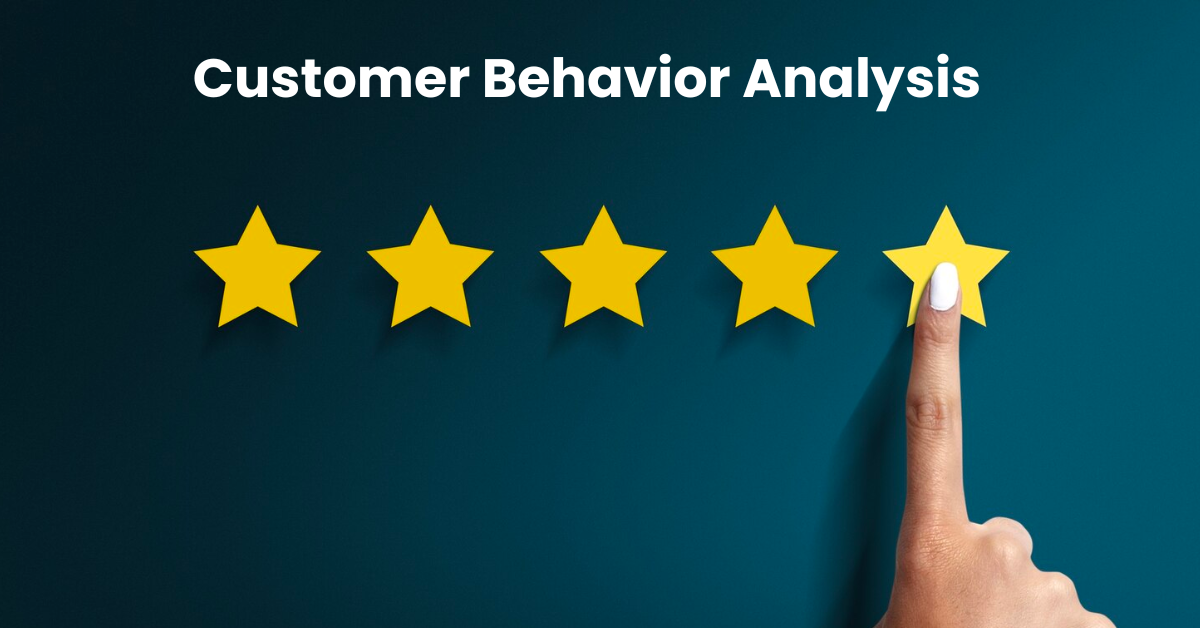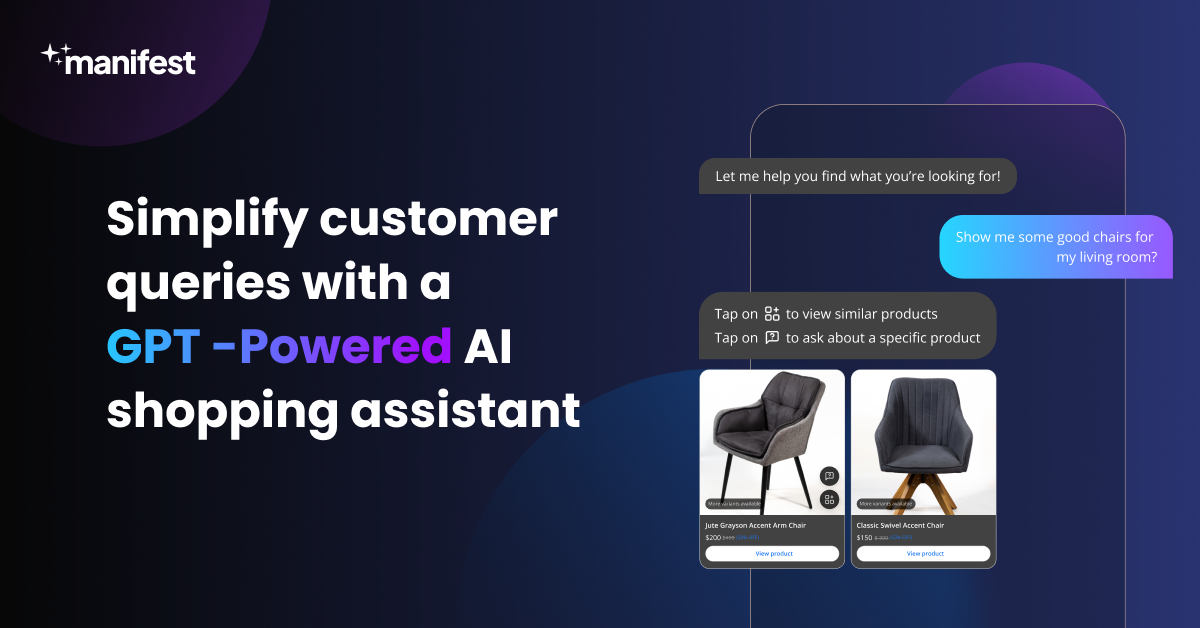Customer Behavior Analysis: The Essential Guide for E-Commerce Businesses

In the ever-evolving e-commerce landscape, customer behavior analysis has become an essential tool for businesses of all sizes. By understanding how customers interact with their products and services, businesses can gain valuable insights that can help them improve their customer experience, optimize their marketing campaigns, and boost their sales.
In this comprehensive guide, we will explore the different types of customer behaviour data, how to collect it, and how to analyze it to extract actionable insights. We will also discuss how to use customer behavior analysis to improve your e-commerce business in key areas such as product development, personalization, marketing, and churn reduction.
What is Customer Behavior Analysis?

Customer behavior analysis refers to the systematic examination and evaluation of how customers act, react, and make decisions in various contexts, with a particular focus on their interactions with products, services, and brands. In the context of e-commerce, customer behavior analytics involves understanding how individuals navigate through online platforms, make purchase decisions, and engage with digital content.
Why is Customer Behavior Analysis Important for Ecommerce businesses?

- Personalization: Tailoring marketing efforts based on customer preferences enhances engagement and conversion rates.
- Customer Retention: Understanding behavior aids in building loyalty through targeted promotions and improved post-purchase experiences.
- Conversion Optimization: Analyzing customer behaviour allows for strategic adjustments to website design and the purchasing process, boosting conversion rates.
- Competitive Edge: Adapting to changing trends and customer preferences ensures staying ahead in the competitive e-commerce market.
- Resource Allocation: Efficient allocation of resources by focusing on products and strategies that align with customer behavior and preferences.
- Customer Satisfaction: Meeting customer expectations fosters satisfaction, leading to positive reviews, referrals, and sustained business growth.
Benefits of Customer Behavior Analysis in Marketing
Customer behavior analysis for e-commerce businesses can provide the following benefits:
- Improved product offerings: By understanding what customers are buying, what they are searching for, and what they are saying about your products, you can identify opportunities to improve your product offerings. For example, you may identify a need for a new product line, or you may need to make changes to existing products to make them more appealing to your target audience.
- Personalized customer experience: By understanding customer behavior, you can personalize the customer experience across all touchpoints, from the website to the checkout process to post-purchase support. For example, you can recommend products to customers based on their past purchases and browsing history, or you can offer targeted discounts and promotions.
- Optimized marketing campaigns: By understanding customer behavior, you can create more effective marketing campaigns. For example, you can target your ads to specific customer segments, or you can send more personalized email marketing campaigns.
- Reduced churn: By understanding customer behavior, you can identify customers who are at risk of churning and take steps to retain them. For example, you may offer them a discount or reach out to them to see if there is anything you can do to improve their experience.
- Increased sales: By improving your product offerings, personalizing the customer experience, optimizing your marketing campaigns, and reducing churn.
How to Conduct a Customer Behavior Analysis?
To conduct a shopping behavior analysis, you can follow these steps:
- Define your goals. What do you hope to achieve with your customer behavior analysis? Are you trying to improve your product offerings, personalize the customer experience, optimize your marketing campaigns, reduce churn, or increase sales? Once you know your goals, you can identify the specific data you need to collect and analyze.
- Collect data. There are a variety of ways to collect customer behavior data, such as website analytics, customer surveys, customer interviews, social media monitoring, and CRM data. The best data sources for your business will depend on your specific goals and the type of data you need to collect.
- Clean and organize the data. Once you have collected your data, you need to clean it and organize it so that it can be easily analyzed. This may involve removing duplicate data, correcting errors, and formatting the data in a consistent way.
- Analyze the data. There are a variety of statistical and analytical tools that you can use to analyze customer behavior data. The specific tools and methods you use will depend on the type of data you have collected and your specific goals.
- Identify trends and patterns. Once you have analyzed the data, you need to look for trends and patterns. This may involve segmenting your customers into different groups, creating customer personas, or mapping out customer journeys.
- Develop insights and recommendations. Based on the trends and patterns you have identified, you can develop insights and recommendations for how to improve your business. For example, you may identify new product opportunities, ways to improve the customer experience, or more effective marketing strategies.
- Implement your recommendations and track the results. Once you have developed insights and recommendations, you need to implement them and track the results. This will help you to measure the effectiveness of your customer behavior analytics and make necessary adjustments over time.
Types of Customer Behavior Data
Customer behavior data encompasses various types of information that help businesses understand how their customers interact with products, services, and the overall brand. Here are key types of customer behavior data:
- Website Analytics:
- Page Views: The number of times a particular page on the website is viewed.
- Bounce Rate: Percentage of visitors who navigate away from the site after viewing only one page.
- Time on Page: Average time visitors spend on a specific page.
- Purchase History:
- Transaction Data: Information on individual purchases, including product details, order value, and time of purchase.
- Frequency of Purchase: How often a customer makes a purchase within a specific time frame.
- Average Order Value (AOV): The average amount spent by a customer per transaction.
- Customer Interaction Data:
- Click-through Rate (CTR): Percentage of users who click on a specific link or call-to-action.
- Conversion Rate: Percentage of visitors who take a desired action, such as making a purchase.
- Abandoned Cart Rate: The proportion of users who add items to their cart but do not complete the purchase.
- Customer Segmentation Data:
- Demographics: Information about customers' age, gender, location, income, etc.
- Psychographics: Insights into customers' values, interests, and lifestyles.
- Behavioral Segmentation: Grouping customers based on their specific behaviors, such as frequent purchases or engagement with certain product categories.
- Social Media Metrics:
- Likes, Shares, and Comments: Indicators of engagement and interest in social media content.
- Mentions and Brand Sentiment: Monitoring how often the brand is mentioned and the sentiment associated with those mentions.
- Customer Feedback:
- Surveys and Reviews: Direct feedback from customers regarding their experiences and satisfaction.
- Net Promoter Score (NPS): Measures the likelihood of customers recommending the brand to others.
5 Best customer behavior analysis tools
Here are the 5 best customer behavior analysis tools in 2023, including BIK.ai:
BIK

BIK is a customer behavior analysis platform that helps businesses understand their customers and drive growth. It uses AI to analyze customer data from a variety of sources, including website analytics, CRM data, and social media data. BIK provides insights into customer behavior, such as customer segmentation, customer journeys, and customer churn. It also provides recommendations on how to improve the customer experience, increase sales, and reduce churn.
Google Analytics

Google Analytics is a free web analytics tool that provides insights into website traffic and visitor behavior. It tracks key metrics such as page views, unique visitors, and bounce rate. Google Analytics also provides insights into customer behavior, such as customer segmentation, customer journeys, and customer churn.
Mixpanel

Mixpanel is a consumer behavior analysis tool that helps businesses understand how users interact with their products. It tracks key metrics such as feature usage, user engagement, and churn rate. Mixpanel also provides insights into customer behavior, such as customer segmentation, customer journeys, and user funnels.
Amplitude

Amplitude is a customer behavior analysis tool that helps businesses understand how users interact with their digital products. It tracks key metrics such as user engagement, feature usage, and conversion rates.
Heap

Heap is a shopper behavior analysis tool that helps businesses understand how users interact with their websites and apps. It tracks key metrics such as page views, button clicks, and scroll depth.
Using AI-powered Customer Behavior Analysis to Improve your Ecommerce Business

AI-powered customer behavior analysis tools can be used to track and analyze a wide range of customer data, including website traffic, purchase history, product reviews, and social media engagement. This data can then be used to gain insights into customer preferences, needs, and motivations.
Businesses can use these insights to improve their product offerings, marketing campaigns, customer service, and overall customer experience. For example, businesses can use customer behavior data to:
- Identify new product opportunities
- Develop more targeted marketing campaigns
- Personalize the customer experience
- Reduce customer churn
- Increase sales
Manifest AI is a GPT-powered AI tool that can help e-commerce businesses improve their customer experience and drive growth. Manifest AI uses AI to analyze customer behavior data from a variety of sources, including website analytics, CRM data, and social media data. Manifest AI provides insights into customer behavior, such as customer segmentation, customer journeys, and customer churn. It also provides product recommendations on how to improve the customer experience, increase sales, and reduce churn.
Here are some specific analysing customer behaviour example of how Manifest AI can help e-commerce businesses:
- Product recommendations: Manifest AI can use customer behavior data to recommend products to customers that they are likely to be interested in. This can help businesses increase sales and reduce cart abandonment.
- Personalized marketing campaigns: Manifest AI can be used to create personalized marketing campaigns for different customer segments. This can help businesses improve their marketing ROI and increase customer engagement.
- Customer segmentation: Manifest AI can be used to segment customers into different groups based on their behavior, demographics, and other factors. This can help businesses better understand their customers and create more targeted marketing campaigns.
- Customer churn prevention: Manifest AI can be used to identify customers who are at risk of churning. Businesses can then take proactive steps to retain these customers and reduce churn rates.
Conclusion
Customer behavior analysis is an essential tool for e-commerce businesses of all sizes. By understanding how customers interact with their products and services, businesses can make better decisions about how to improve their customer experience, increase sales, and drive growth.
There are a variety of customer behavior analysis tools available, including AI-powered tools such as Manifest AI. These tools can help businesses collect, analyze, and understand customer data from a variety of sources.
By using customer behavior analysis to improve their business, e-commerce businesses can gain a competitive advantage and achieve their long-term goals.

.png)
